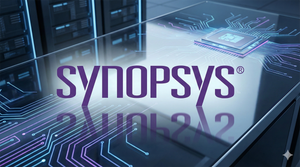
Today, November 19, 2025, after the U.S. stock market closes, Nvidia (NASDAQ: NVDA) is poised to unveil its Q3 Fiscal 2026 earnings, an event widely anticipated to be a pivotal moment for global financial markets. As the undisputed leader in artificial intelligence (AI) chip manufacturing, the results from the Santa Clara-based chipmaker are expected to trigger significant shifts across the tech sector and potentially influence broader global economies. The report is more than just a financial update for a single company; it serves as a critical "AI stress test" for Wall Street and a barometer for the ongoing AI revolution, with its implications rippling through international stock markets and tech investments worldwide.
Given Nvidia's central role and immense market capitalization, currently hovering around $4.4 trillion to $4.6 trillion, any significant movement in its stock could translate into a staggering value swing, potentially marking one of the largest post-earnings changes ever recorded. Investors and analysts are keenly watching for a "beat and raise" report—not only exceeding current Q3 estimates but also providing a robust revenue forecast for the upcoming Q4—as anything less could be interpreted as a deceleration in growth, potentially triggering a sharp correction across the AI and tech sectors.
Nvidia's Q3 Fiscal 2026: High Stakes and Higher Expectations
Nvidia is scheduled to announce its fiscal third-quarter 2026 earnings after the U.S. market closes today, November 19, 2025, typically between 4:20 pm and 4:30 pm Eastern Standard Time, followed by a conference call at 5 pm EST. This report is arguably the most anticipated earnings event of the season, reflecting the company's outsized influence on the burgeoning AI industry.
Analyst consensus for Q3 Fiscal 2026 revenue ranged from $54.8 billion to $55.2 billion, representing a robust year-over-year growth of 55% to 56%. Earnings per share (EPS) were equally ambitious, forecasted at approximately $1.26, indicating a substantial 53% to 61% increase from the prior year. The primary driver of this projected growth is Nvidia's Data Center segment, which analysts expected to see sales surge by 52% to 56% year-over-year, potentially exceeding $48 billion. This surge is fueled by the insatiable demand for Nvidia's AI chips, such as the H100 and the newer Blackwell GPUs, which are foundational to advanced AI model training and deployment.
Key players and stakeholders involved in this event span the entire financial and technological ecosystem. CEO Jensen Huang and CFO Colette Kress are central figures, providing commentary and forward guidance. Investors range from individual shareholders to large institutional entities, ETFs like Vanguard Total Stock Market ETF (NYSEARCA: VTI) and Vanguard S&P 500 ETF (NYSEARCA: VOO), and mutual funds such as Vanguard Index Funds and Fidelity Concord Street Trust. Financial analysts from firms including LSEG, FactSet, Bloomberg, Bank of America, Wells Fargo, Morningstar, Citi, Bernstein, and Zacks have provided forecasts, shaping market sentiment. Nvidia's major customers, including hyperscale cloud providers such as Microsoft (NASDAQ: MSFT), Amazon (NASDAQ: AMZN), Alphabet (NASDAQ: GOOGL), and Meta (NASDAQ: META), are crucial, as their aggressive AI infrastructure spending directly impacts Nvidia's sales. Competitors like Advanced Micro Devices (NASDAQ: AMD) and Intel (NASDAQ: INTC) are also closely monitoring the results to gauge market trends.
The market's initial reaction is anticipated to be highly volatile, with options traders pricing in an implied stock movement of approximately 7% in either direction. For Nvidia's stock rally to continue, a "beat and raise" report is deemed essential. Any guidance merely in line with expectations, or a miss on either front, could trigger a sharp correction, not just for Nvidia but across the broader tech sector, exacerbating growing anxieties about a potential "AI bubble." Conversely, a robust report could temporarily alleviate these fears and reignite investor confidence in the AI rally.
Companies Poised to Win or Lose
Nvidia's Q3 Fiscal 2026 earnings report acts as a bellwether for the entire AI and semiconductor industries, influencing a wide array of public companies. The outcomes will largely depend on whether Nvidia's results validate or challenge the current high expectations for AI-driven growth.
Potential Winners (in a scenario of strong Nvidia earnings):
A robust report from Nvidia, signaling sustained demand for its AI GPUs, would likely boost confidence across the entire ecosystem.
- Foundry and Manufacturing Partners: Taiwan Semiconductor Manufacturing Company (TSMC) (NYSE: TSM), as Nvidia's primary foundry, stands to gain significantly from increased orders, ensuring high utilization rates and strong revenue. Samsung Electronics (KRX: 005930) / Samsung Foundry could also see increased collaboration and orders for its memory and foundry services.
- Memory Providers: Companies like Micron Technology (NASDAQ: MU) would benefit from the surging demand for high-bandwidth memory (HBM) essential for AI workloads. Western Digital (NASDAQ: WDC) and Seagate Technology (NASDAQ: STX) would also see increased demand for high-capacity storage.
- Data Center Infrastructure and Components: Dell Technologies (NYSE: DELL) and Supermicro (NASDAQ: SMCI), which build servers and data center infrastructure optimized for AI, would experience increased demand. Broadcom (NASDAQ: AVGO) and Marvell Technology Group (NASDAQ: MRVL), providing critical high-speed networking chips, would also benefit from robust AI-driven data center growth.
Potential Losers (in a scenario of weak Nvidia earnings):
A disappointing report could trigger market corrections across various AI-related stocks.
- Direct Competitors: While Advanced Micro Devices (NASDAQ: AMD) and Intel (NASDAQ: INTC) are direct competitors, a broad slowdown in the AI chip market (implied by weak Nvidia earnings) could negatively impact them as well. However, if Nvidia's weakness is due to specific competitive gains by AMD (e.g., AMD's MI300X gaining traction), then AMD could be a relative winner.
- Major Customers (Hyperscalers - nuanced impact): Hyperscalers like Amazon (NASDAQ: AMZN - AWS), Microsoft (NASDAQ: MSFT - Azure), Alphabet (NASDAQ: GOOGL - Google Cloud), and Oracle (NYSE: ORCL) are Nvidia's largest customers. A downturn in Nvidia's earnings due to reduced hyperscaler spending would signal slowing growth in AI infrastructure investment, potentially impacting their cloud divisions. Conversely, if Nvidia's issues stem from supply constraints and hyperscalers are increasingly successful with their proprietary AI chips (e.g., Google's TPUs, Amazon's Trainium/Inferentia), these customers could be long-term winners by reducing reliance on Nvidia.
- Broader AI Ecosystem: Any company whose valuation is highly tied to the "AI boom" narrative without robust underlying fundamentals could suffer from a general market correction if Nvidia's report triggers "AI bubble" fears.
Wider Significance for the AI and Semiconductor Landscape
Nvidia's Q3 Fiscal 2026 earnings report transcends a single company's performance, serving as a powerful indicator of the health and trajectory of the entire AI industry and reflecting profound shifts in computing paradigms, competitive landscapes, and global technological policies.
A strong report reinforces Nvidia's sustained dominance in the AI accelerator market, underscoring the ongoing surge in demand for high-performance computing essential for training and deploying large language models (LLMs). This signals continued aggressive investment by hyperscalers and enterprises in AI infrastructure, where Nvidia's GPUs and networking solutions are foundational. Beyond hardware, the report highlights the critical importance of Nvidia's CUDA software platform, which creates a powerful moat and ecosystem that is challenging for competitors to replicate.
The ripple effects on competitors would be significant. Sustained strong performance by Nvidia would intensify pressure on Advanced Micro Devices (NASDAQ: AMD) and Intel (NASDAQ: INTC) to accelerate their AI hardware roadmaps and software ecosystems. While AMD's Instinct accelerators are gaining traction, Nvidia's scale and established lead make it difficult to quickly close the gap. Hyperscalers' efforts to develop their own custom AI chips (e.g., Google's TPUs, AWS's Trainium and Inferentia) would either be validated or potentially slowed depending on Nvidia's perceived superior performance. For partners like cloud service providers and server manufacturers such as Supermicro (NASDAQ: SMCI), Dell Technologies (NYSE: DELL), and HPE (NYSE: HPE), strong Nvidia results would solidify partnerships and increase sales of AI-optimized systems.
Regulatory and policy implications, particularly U.S.-China tech restrictions on advanced AI chips, remain a critical factor. Nvidia's earnings report could provide insights into how the company is navigating these restrictions, potentially through offering "detuned" chips for the Chinese market. Any significant impact on revenue from China could signal either the effectiveness of these restrictions or Nvidia's ability to mitigate their effects. Geopolitical concerns also emphasize the importance of diversified and resilient supply chains, with updates on Nvidia's efforts to ensure production capacity being closely watched.
Historically, Nvidia's current position is often compared to Intel's (NASDAQ: INTC) dominance in the x86 processor market during the PC era, where Intel's earnings were a bellwether for the broader tech industry. Similarly, Microsoft's (NASDAQ: MSFT) creation of a powerful software ecosystem with Windows and Office mirrors Nvidia's CUDA platform, which creates high barriers to entry. The massive build-out of AI infrastructure also draws parallels to Cisco's (NASDAQ: CSCO) role during the dot-com boom, where its revenue growth was driven by foundational internet investments.
The Road Ahead: Navigating Growth and Challenges
Following Nvidia's Q3 Fiscal 2026 earnings, the AI and semiconductor industries are poised for continued, transformative growth, albeit with emerging challenges and strategic shifts.
In the short-term, Nvidia is expected to maintain its leadership, driven by the strong demand for its Blackwell GPUs, reportedly sold out for the next 12 months. The CUDA software ecosystem continues to provide a significant competitive advantage. However, a critical challenge involves Nvidia's strategic pivot to using smartphone-style LPDDR memory chips in its AI servers to reduce energy consumption. This shift could strain existing manufacturing capacity for DRAM manufacturers like Samsung (KRX: 005930), SK Hynix (KRX: 000660), and Micron Technology (NASDAQ: MU), potentially doubling server-grade memory chip costs by late 2026 and increasing market volatility.
Long-term, Nvidia's strategy centers on continued innovation with successive generations of AI chips like the Rubin architecture (slated for 2026), and a significant pivot towards "Reasoning AI" (AI agents) and "Physical AI" (robotics, autonomous vehicles). The Blackwell Ultra platform is specifically engineered for these advanced AI applications. Nvidia is also expanding its software platforms and enterprise AI solutions, integrating its Llama Nemotron open reasoning AI models into major enterprise applications through partnerships with companies like Microsoft Azure AI Foundry, SAP (NYSE: SAP), and ServiceNow (NYSE: NOW), deepening its ecosystem.
Competitors are adapting rapidly. Advanced Micro Devices (NASDAQ: AMD) is intensifying its focus on AI accelerators, planning a "generational leap" with its MI400 series. Intel (NASDAQ: INTC) continues to invest in its Gaudi3 AI accelerator and Core Ultra processors with Neural Processing Units (NPUs). Hyperscalers like Google (NASDAQ: GOOGL), Amazon (NASDAQ: AMZN), and Microsoft (NASDAQ: MSFT) are increasingly designing their own custom AI accelerators to optimize workloads and reduce reliance on external suppliers. Broadcom (NASDAQ: AVGO) is emerging as a strong competitor in the Application-Specific Integrated Circuit (ASIC) market, securing a deal to supply custom AI processors to OpenAI, indicating a growing diversification in AI hardware solutions. Taiwan Semiconductor Manufacturing Company (TSMC) (NYSE: TSM) remains a "guaranteed winner," expanding its advanced packaging capabilities to meet the surging demand for high-end chips from all major players.
Emerging market opportunities are vast, particularly in AI chips for edge devices, industrial automation, and automotive technologies. The rise of "Agentic AI" and "Physical AI" applications, such as advanced robotics and autonomous vehicles, will further drive demand. However, geopolitical shifts, particularly U.S.-China export controls, continue to reshape global supply chains, leading to increased tariffs and a push for regionalized production. Talent shortages and the need for resilient supply chains remain critical challenges.
Wrapping Up: A New Era for Tech Investments
Nvidia's Q3 Fiscal 2026 earnings report, delivered today, November 19, 2025, marks a significant inflection point, solidifying key takeaways for the future of technology and investment. The report is expected to underscore Nvidia's continued dominance in the AI chip market, driven by robust demand for its data center products and a substantial backlog of orders for its next-generation Blackwell and Rubin architectures. This performance not only validates Nvidia's strategic direction but also reaffirms the immense capital expenditures being poured into AI infrastructure globally.
Moving forward, the market will assess the sustainability of this aggressive AI build-out. While concerns about an "AI bubble" persist, a strong "beat and raise" from Nvidia would likely reassure investors that the AI revolution is still in its early to middle stages, with significant growth runway ahead. The report also highlights the critical importance of Nvidia's CUDA software ecosystem, which continues to act as a powerful moat, making it challenging for competitors to gain significant traction despite their own advancements.
The lasting impact of this event will be seen in renewed investor confidence across the AI and semiconductor sectors, potentially sparking a broader tech rally. However, it also emphasizes the need for companies to adapt to a rapidly evolving landscape, where innovation, supply chain resilience, and strategic partnerships are paramount. The potential for increased memory chip costs and ongoing geopolitical tensions will continue to shape the industry's trajectory.
Investors should closely watch several key indicators in the coming months. Foremost among these is Nvidia's Q4 Fiscal 2026 guidance, which will provide the clearest picture of near-term growth expectations. Updates on the production ramp-up of Blackwell Ultra and the timely mass production of the Rubin platform will be critical for assessing Nvidia's execution capabilities. Furthermore, monitoring hyperscaler spending trends, the competitive landscape (especially advancements from AMD and Broadcom's ASIC solutions), and the evolution of gross margins will be essential. Finally, macroeconomic factors, such as interest rates and global demand, will continue to play a pivotal role in shaping the overall investment climate for AI.
This content is intended for informational purposes only and is not financial advice






